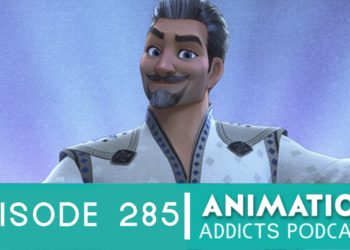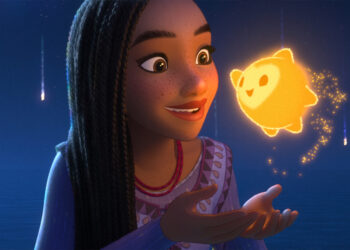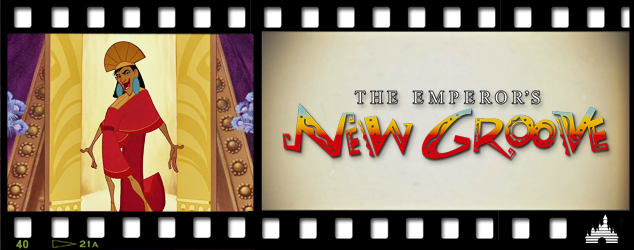
To this day, The Emperor’s New Groove remains one of Disney’s most delightfully strange films in its animated canon.
This film was released December 15, 2000, post-Renaissance and after six years of production turmoil. It emerged in theaters, colorful and chaotic, with a 2D look that was somehow Disney, but more jagged and angular; parodying the aesthetic that could be found throughout their animation style for decades. Following the lackluster movie, Dinosaur, and seeming so riddled with problems before release, it would be hard to go into this Disney animated film without some trepidations. And yet, you leave an hour and a half later having truly enjoyed yourself. This misfit film somehow managed to come above the chaos and hit the emotional highs and lows, firing on all cylinders while doing so.
This movie had so many growing pains before release. In fact, the hectic tale of the production warranted its own documentary, The Sweatbox. Before the emperor was grooving, he was in a movie called Kingdom of the Sun, swapping places with a peasant a la The Prince and the Pauper. After being turned into a llama by Yzma (whose evil schemes involved capturing the sun to remain youthful) he falls in love with a female llama. When it became clear that the film would not be complete in time for release, almost the entire film was scrapped and rewritten. Sting, the main composer, had to be dropped. Director, Roger Allers jumped ship, and producer Randy Fullmer was given two weeks to salvage the whole project before it would be shut down. Kuzco was bumped from supporting role to protagonist. In short, almost everything about the film was changed.

In the end, the viewer sees a completely ambition animated work, spiked with chaos and fun and humor. The movie begins with a strange sort of scene being set. The audience is told that it is long ago, and deep in the jungle, and then we see an odd sight – a llama sitting in the rain, crying. And then, Kuzco speaks to us. Immediately he is the center of this film and plans to remain there, wanting to be seen as the spoiled young Incan emperor, who is narcissistic, sexist, and ageist. Within the opening, catchy dance number, he commits two acts that set off the rest of the film. He fires his advisor Yzma and plans to destroy a village for his own private summer home to be dubbed Kuzcotopia.
Thus, the plot is set. The two characters that Kuzco has wronged set out on vastly different paths. Yzma, angered at being fired, immediately decides to kill the young emperor, and Pacha, the hardworking peasant that only cares for his family, decides to try and change Kuzco’s mind and save his village.
When trying to plot out this film, it all sounds ridiculous: a humorous murder attempt, a gentle giant that speaks squirrel, a cross-dressing llama.
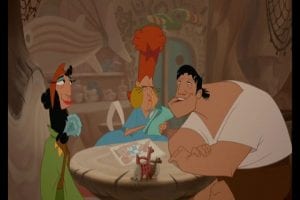
And yet, one cannot help but enjoy every minute of it. This movie takes the typical buddy-film of two people overcoming their differences and learning something along the way and turns the story stereotype on its head at every turn.
Kuzco is the worst. His selfishness is continually hurting those around him, and he has no empathy for anyone else.
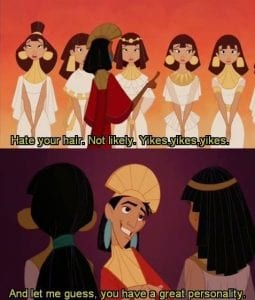
But you, kind of like him? I think there are times where we wish that we got everything easily, consequences be darned. And yeah, he’s mean and awful, but he is also funny. His transformation helps to change him from an [insert mean expletive of your choice here] into an actually decent person. It is the type of character arc that Disney doesn’t always tackle head-on. Kuzco is one of those few characters that would be the villain of a Disney film, but since he is the protagonist we get to see him develop so much further than that. It’s nice to see, that no matter how deep down a dark hole you might get, there is always the possibility for light. This is a story of tolerance, and despite over the top antics, the meanings are subtle and clairvoyant.
And then there is Yzma, the true over-the-top villain, who, despite all of her flaws, is kind of wronged at the beginning of the film. Rather than taking that same higher road towards redemption, however, she attempts a murder with the help of her lovable and squirrel-speaking buffoon of a sidekick, Kronk. Despite his ineptitude, you cannot help to love this character, who often speaks for the audience in his own befuddled and yet strangely wise sort of way.
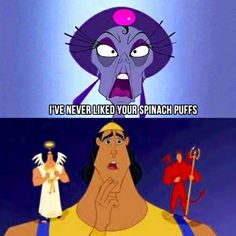
Pacha I always found to be kind of dull, because, well, he is normal amid the beautiful clutter of miscellaneous characters. Still, he has the kind of human decency that we can all love and his family, consisting a pregnant wife and a sassy trio of children, help to place realness and human emotion in this film of talking llamas and cats. Without Pacha and his family, this film could have very easily gone down the path of complete craziness. They help to ground the plot and make the stakes much more understandable.
This is not a perfect film. Despite the lively music, humorous one-liners, and colorful animation, it still does not quite seem to hit that same emotional resonance that so many other Disney films do. The plot could be smoothed and perfected in areas, and, the jagged edges of the characters could venture into being borderline grating. In the end, though, this is a wholly enjoyable film. The quirk and mirth makes it stand apart from the rest of the Disney films and, upon learning the production turmoil this film went through, one can’t help but have a certain level of respect for the fact it was completely change in such a short amount of time, and still ended up such a delightful film.
What do you think of The Emperor’s New Groove? What are your favorite one-liners? Is there anything you dislike about the film?
Edited by: Hannah Wilkes


